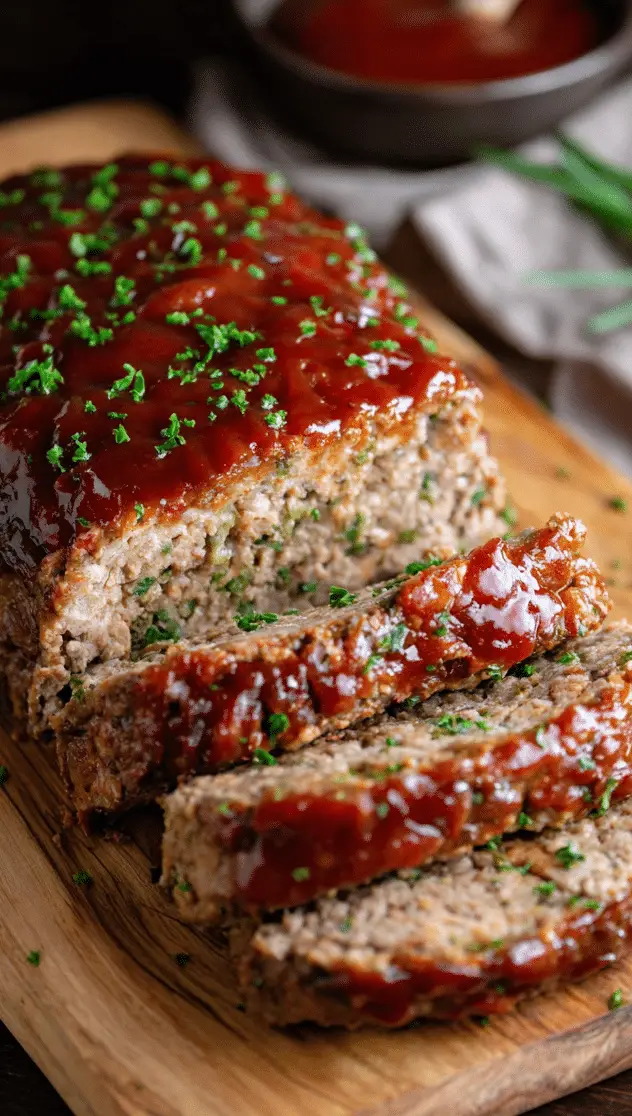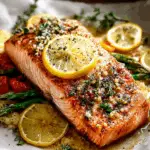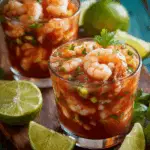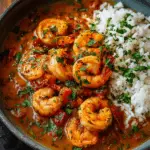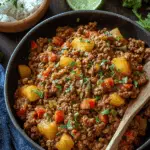Transport yourself back to a simpler time with this classic 1950s meatloaf recipe. A true staple of mid-century American kitchens, this hearty and flavorful dish brings together ground beef, savory herbs, and a sweet ketchup glaze to create the ultimate comfort food. It’s budget-friendly, easy to prepare, and guaranteed to fill your home with nostalgic aromas. Serve it with mashed potatoes and roasted vegetables for a complete retro-style meal the whole family will love.
Ingredients
-
1 kg / 2.2 lbs Ground Beef (lean or medium-lean)
-
1 Large Onion, finely chopped (about 150g / 1 cup)
-
2 Large Eggs, lightly beaten
-
120 ml / ½ cup Milk
-
120g / 1 cup Bread Crumbs (plain or seasoned)
-
60 ml / ¼ cup Ketchup
-
1 tbsp Worcestershire Sauce (or soy sauce for a milder alternative)
-
1 tsp Dried Thyme
-
1 tsp Dried Rosemary
-
½ tsp Garlic Powder
-
Salt and Pepper, to taste
-
Topping: 120 ml / ½ cup Ketchup (for glazing)
Directions
-
Preheat your oven to 175°C / 350°F.
-
In a large mixing bowl, combine ground beef, chopped onion, beaten eggs, and milk. Mix well.
-
Add bread crumbs, ketchup, Worcestershire sauce, thyme, rosemary, garlic powder, salt, and pepper. Gently mix with your hands until everything is just combined—avoid overmixing.
-
Shape the mixture into a loaf and place it into a 9×5 inch loaf pan.
-
Spread the remaining ketchup evenly over the top as a glaze.
-
Bake for 60 minutes, or until the internal temperature reaches 71°C / 160°F. Use a meat thermometer for accuracy.
-
Rest the meatloaf for 10 minutes before slicing and serving.
Nutritional Information (per serving, approximate)
-
Calories: 350 kcal
-
Carbohydrates: 20g
-
Protein: 30g
-
Fat: 20g
-
Saturated Fat: 8g
-
Unsaturated Fat: 10g
-
Trans Fat: 1g
-
-
Cholesterol: 100mg
-
Sodium: 400mg
-
Fiber: 2g
-
Sugar: 5g
Why the 1950s Meatloaf Stands the Test of Time
In a world dominated by fleeting food trends and exotic fusions, the enduring appeal of a 1950s-style meatloaf might seem surprising at first. But dig a little deeper, and its lasting popularity becomes clearer.
1. Simplicity That Delivers
One of meatloaf’s greatest strengths lies in its simplicity. It doesn’t need fancy ingredients or elaborate techniques. At its core, it’s a mixture of ground meat, binder, seasoning, and a tangy-sweet glaze. The end result is a hearty, flavorful dish that feels like a warm hug.
2. Adaptability
Though traditionally made with ground beef, the recipe adapts easily to changing dietary preferences and availability. Today, cooks experiment with ground turkey, chicken, or plant-based meat alternatives. Some add grated vegetables to enhance nutrition, or swap in different spices to reflect global influences.
3. Nostalgic Value
Meatloaf is one of those dishes that connects generations. Whether it was your grandmother’s special recipe or the version served at a childhood diner, many people associate it with fond memories. Recreating a 1950s meatloaf isn’t just about flavor—it’s about reliving cherished moments and sharing them with others.
Cultural Symbolism of the 1950s Meatloaf
In many ways, meatloaf is more than just food—it’s a cultural symbol. The 1950s represented a time of optimism, family values, and growing prosperity. Suburban homes, nuclear families, and structured routines defined the lifestyle. Dinner was a sacred event, with most families eating together at the same time every evening.
Meatloaf emerged as the perfect dish for this setting. It was nutritious, filling, and modest—reflecting the frugality of the past while embracing the abundance of the present. Even the glaze of ketchup across the top felt like a nod to the era’s fascination with convenience foods and packaged condiments.
In magazines, television commercials, and cookbooks, meatloaf was often featured as the quintessential “mom’s home-cooked meal,” reinforcing gender roles and traditional values. Today, while our understanding of gender and family dynamics has evolved, meatloaf still retains its symbolic role as a meal made with care and intended to bring people together.
Serving Suggestions: Pairing Like It’s 1955
To truly appreciate a retro meatloaf experience, consider the side dishes that would’ve accompanied it in a 1950s household. The most traditional pairing is mashed potatoes—creamy, buttery, and the perfect foil to the savory richness of the meatloaf. Add a ladle of brown gravy or let the ketchup glaze do the talking.
Other classic sides might include:
-
Roasted or buttered green beans
-
Canned corn or creamed corn
-
Glazed carrots
-
Jell-O salad (yes, it’s a thing—and a real throwback!)
-
Dinner rolls or slices of white bread
For dessert, a warm apple pie or chocolate pudding would’ve sealed the deal back then.
Modern Twists on a Retro Classic
While the traditional 1950s meatloaf still satisfies, today’s home cooks aren’t afraid to tweak it. Here are a few popular variations:
-
Stuffed Meatloaf: Fill the center with cheese, hard-boiled eggs, or sautéed vegetables.
-
BBQ Glaze: Replace the ketchup topping with barbecue sauce for a smokier flavor.
-
Italian-Style: Add grated Parmesan, oregano, and a marinara glaze for an Italian-American spin.
-
Mini Loaves or Muffin Tins: Speed up cooking time and make portions easier to manage for weeknight meals or meal prep.
Even the presentation can be elevated—swap the loaf pan for a free-form shape baked on a sheet pan and served on a wooden board for a rustic aesthetic.
Health and Nutrition Considerations
Meatloaf can be as nutritious—or indulgent—as you want it to be. By using lean meats, whole grain breadcrumbs, and incorporating finely grated vegetables like carrots or zucchini, you can boost the fiber and vitamin content without compromising flavor.
For those watching their sodium or fat intake, adjustments like low-sodium ketchup, egg whites instead of whole eggs, or olive oil sprays instead of butter can make a difference. Using ground turkey or plant-based meat substitutes offers a lighter, more sustainable version without sacrificing heartiness.
Despite its dense, meaty reputation, meatloaf remains a versatile canvas for healthier cooking that still feels deeply satisfying.
Why Meatloaf Still Belongs on Your Table Today
In today’s fast-paced, convenience-driven world, it might be tempting to dismiss meatloaf as a relic of the past. But that would be missing the point. What makes this dish so timeless is not just its flavor, but its spirit.
Cooking meatloaf is about slowing down. It’s about gathering ingredients you probably already have and creating something nourishing and meaningful from them. It’s about bringing people to the table—sharing food, stories, and traditions. Whether you’re preparing it for a nostalgic family dinner or introducing it to a new generation, meatloaf still has a place in modern kitchens.
It’s not flashy, but it’s honest. It doesn’t try too hard, yet it wins hearts every time. And in a world full of complexity, that kind of authenticity is refreshing.
Conclusion
The 1950s meatloaf isn’t just a recipe—it’s a story told through food. It speaks of simpler times, of resourcefulness, of family dinners and cherished traditions. While it may wear the humble disguise of ground meat and breadcrumbs, its legacy is anything but ordinary.
Bringing this dish into your kitchen today is a way of honoring that legacy. Whether you follow the original recipe to the letter or add your own creative twist, you’re continuing a culinary tradition that has warmed homes and hearts for decades.
So go ahead—bake that loaf, slice it thick, and serve it with love. Sometimes, the best meals are the ones that take us back.

